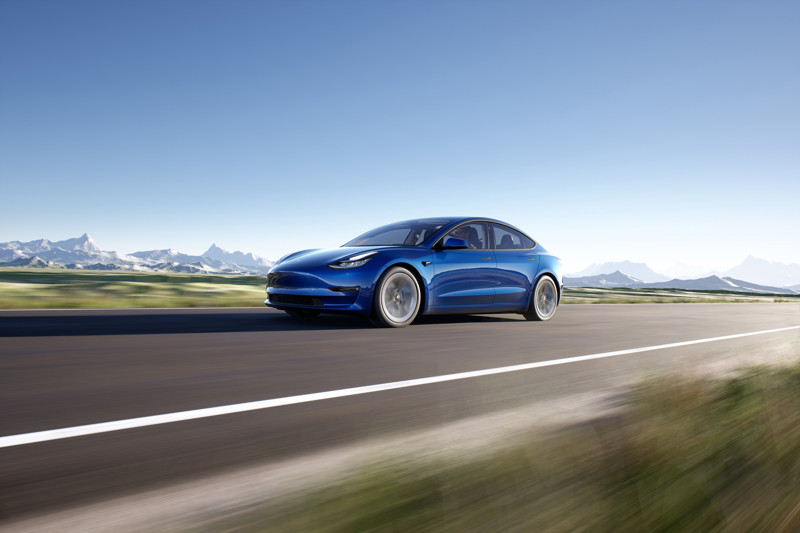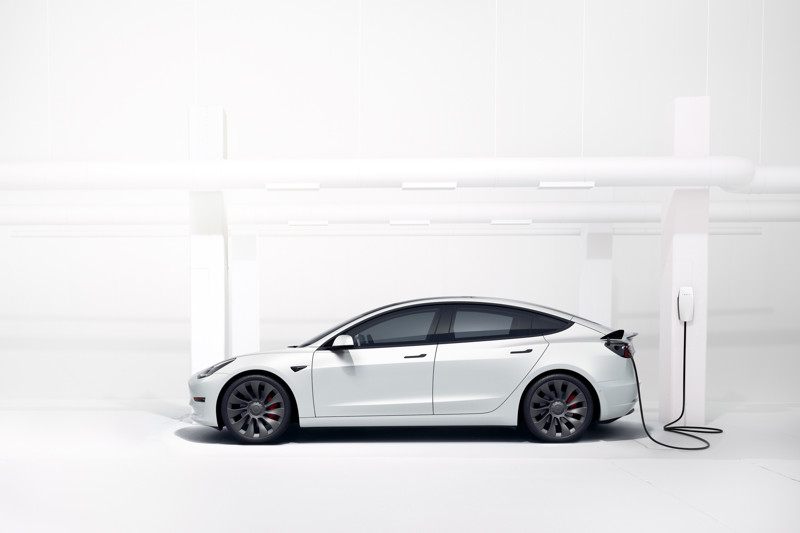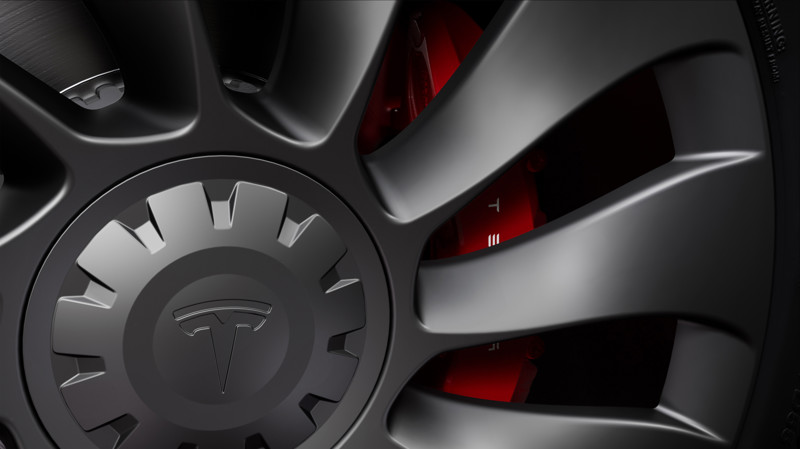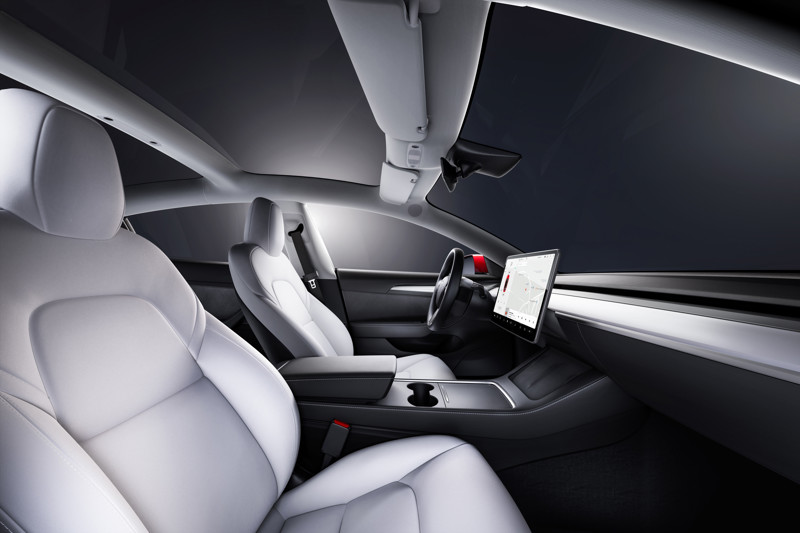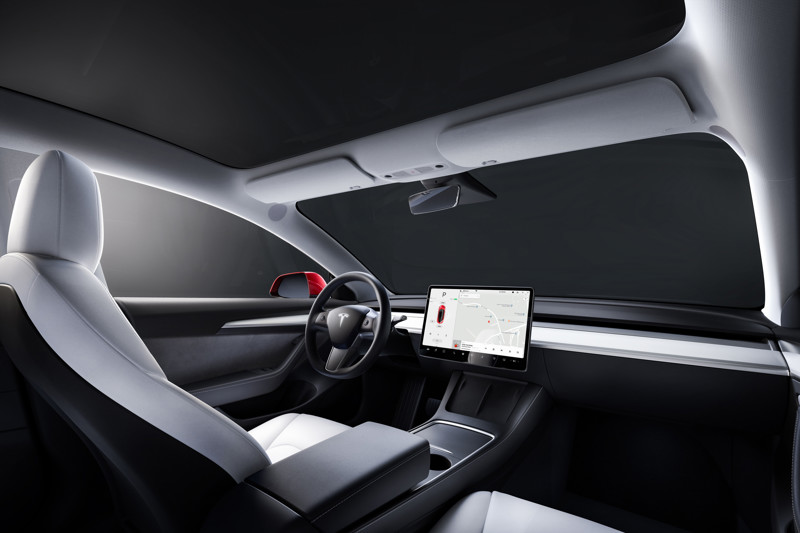Tesla Model 3 (GEN1)
Tesla Model 3 (GEN1) is an all-electric sedan with a WLTP range of up to 495 km (308 miles). EVKX.net has all the details.
Tesla Model 3 (GEN1)
We’ve divided the article into specific sections for easier navigation. Click the links below to jump to different areas or read on for the full article. We also have an overview of the full specifications, an image gallery, detailed information about charging performance, and some online reviews. Our sections:
- Performance
- Battery, range, and charging
- Drivetrain (suspension, brakes, steering)
- Exterior (paint colors, wheels ++)
- Interior (seats++)
- User interface and control
- Infotainment
- Lights
- Advanced driver-assistance systems
- Cargo Capacity and Towing Ability
This model has been replaced by Tesla Model 3 Long Range.
Performance
The Tesla Model 3 (GEN1) offers modest performance with a maximum power of 208 kW (283 hp / 279 bhp) and a total torque of 420 Nm (310 lb-ft). It accelerates from 0 to 100 km/h (0 to 62 mph) in 6.1 seconds and has a top speed of 225 km/h (140 mph), aligning more closely with traditional internal combustion engine vehicles.
Battery, range, and charging
The high-capacity battery has a gross capacity of 60 kWh and a net usable capacity of 59 kWh, providing an 1 kWh buffer (1.7%) for battery protection. With a nominal voltage of 340 volts, the system is classified as a 400-volt battery system, aligning with industry standards. The Lithium-Ion battery uses LFP technology. This has some benefits and disadvantages from the typical NCA/NCM batteries.
Under the WLTP (Worldwide Harmonized Light Vehicles Test Procedure) standard, the vehicle’s range varies between 495 to 491 km (308-305 miles), depending on the specific configuration and options, such as wheel size. Larger wheels, for instance, can increase energy consumption and subsequently reduce the overall range. The vehicle’s energy consumption is rated at 11.9 kWh/100 km for the base model and 12.0 kWh/100 km for the top-tier model under the WLTP test cycle. For more details about the range, see real-world data and range listing on this model’s range and consumption page.
The vehicle supports fast DC charging with a maximum power of 170 kW. Charging from 0% to 100% takes approximately 70 minutes, while a more typical charging scenario from 10% to 80% takes 32 minutes with an average charging speed at 78 kW. Considering an additional 5 minutes for each charging stop due to driving interruptions, the optimal charging range is from 3% to 49%. This results in an effective charging speed, including time lost, of 83 kW, with each charging session taking about 20 minutes and 31 seconds..
In a theoretical 1000 km challenge, starting with a full battery and maintaining a constant speed of 120 km/h (75 mph) under ideal conditions with an assumed consumption rate of 17 kWh/100 km, the trip would take approximately 9 hours and 41 minutes. This journey would require four charging stops from 3% to 51%, with a total charging time of 82 minutes.
Onboard charger
The onboard charger supports up to 11 kW for Level 1 and Level 2 AC charging. This allows you to fully charge the battery from 0 to 100% in approximately 5 hours and 21 minutes using a home charging setup.
Tesla Model 3 (GEN1)
Charge port
The charge port is conveniently located at the left rear corner of the vehicle, facilitating easy access when backing into charging stations. The connector types vary between the different markets. This model uses NACS for North America and CCS Combo 2 for Europe. For complete specifications for all markets, refer to the full specifications.
Drivetrain
Tesla Model 3 (GEN1) features an all-wheel drive system powered by two motors, one on each axle. The motors used are Induction Motors at the front axle and Permanent Magnet Synchronous Motors at the rear axle.
Suspension
The standard suspension has a fixed height and damping. The ground clearance with this suspension is 140 mm.
Steering
Dynamic steering is a standard feature on the Tesla Model 3 (GEN1). Dynamic steering varies the steering ratio as a function of driving speed.
Brakes
The rear and front brakes are cast-iron discs. The front discs are 355mm, and the rear discs are 355mm.
Regenerative braking
Regenerative braking in this model is primarily facilitated through one-pedal driving. Unlike some models, Automatic regen or coasting is not available here. This model offers three stopping modes for one-pedal driving:
- Hold mode brings the vehicle to a complete stop using friction brakes
- Roll mode allows the vehicle to roll until it stops naturally
- Creep mode moves the car forward at low speed
Additionally, you can adjust the strength of the regenerative braking when you lift your foot off the accelerator. There are two levels of regenerative braking to choose from, allowing you to customize the driving experience to your preference.
Exterior
The Tesla Model 3 (GEN1), with dimensions of 4694 mm in length, 1849 mm in width, and 1443 mm in height, falls into D-segment cars, also known as mid-size or family cars, offer more space, comfort, and features than smaller segments, making them suitable for a variety of drivers. The Tesla Model 3 (GEN1) is available in a total of 5 paint colors, including both solid and metallic options.
You can select from multiple wheel options in different sizes on the Tesla Model 3 (GEN1), allowing you to customize your vehicle to suit your style and driving preferences. The available tire and wheel combinations include:
- 255/45 tires on 18" rims
- 255/45 tires on 19" rims
More narrow wheels will improve consumption and give a longer range, while wider wheels will provide better traction and handling.
The car has four regular doors and a boot lid for the trunk.
There is only one roof for this model. The standard roof includes a large panoramic glass roof extending from the front to the rear, enhancing the interior’s spacious and bright feel, thereby improving the mood and comfort of occupants. This glass is tinted to protect against heat from the sun.
The windows from B-pillar and back are tinted, which enhances privacy and reduces glare and heat from the sun, making the interior more comfortable for passengers.
Tesla Model 3 (GEN1)
Interior
Seats
The Tesla Model 3 (GEN1) accommodates five passengers with two seats in the front and a three-seat bench in the rear.
First row seats
The Tesla Model 3 (GEN1) offers a single type of front seat.
The following functionalities are available on the standard seat.
- electric adjustment
- height adjustable headrest
- heating
- memory driver seat
- memory passenger seat
You can choose from 2 different materials/colors for this seat type.
Tesla Model 3 (GEN1)
Second-row seat
The second row has a standard three-seat bench with a 60:40 split where you can fold each section separately to increase the cargo space. In addition, the following functionalities are available.
Tesla Model 3 (GEN1)
There is only one type of steering wheel available.
Climate system
There is one climate system available. The standard climate system supports only controlling one shared zone for the whole car. This model has a heat pump as standard. This heat pump can save significant energy that the EV would use for heating in cold weather.
Comfort
Tesla Model 3 (GEN1) has several features to make your life as a driver or passenger more comfortable.
Keyless entry allows access to the car without needing to find the key. As long you bring it with you, the doors open.
Keyless go makes it possible to start the car without using the key.
The steering wheel is electrically adjustable.
You have wireless charging for your phone.
User interface and control
The Tesla Model 3 (GEN1) has a single screen for the driver. The dashboard’s center has a single infotainment screen for car information and infotainment. The screen on the dashboard’s center is 15.0 inches large and has a 2200 x 1300 pixels resolution. The model does not have a head-up display.
Tesla Model 3 (GEN1)
Infotainment
One type of sound system is available for the Tesla Model 3 (GEN1). With the Tesla Immersive Sound, you get seven speakers with a max system output of 560 watts.
In addition, with the standard in-car navigation system, you get the help you need to find your destination.
The model has 4 USB-C connections as standard.
Lights
The standard headlights use LED technology.
Advanced driver assistance systems
The Tesla Model 3 (GEN1) has several standard and optional advanced driver assistance systems (ADAS) for better safety and comfort.
Safety systems
The Tesla Model 3 (GEN1) has an anti-lock braking system (ABS) as a standard system. This system helps to prevent a vehicle’s wheels from locking up during braking.
The Tesla Model 3 (GEN1) has an Electronic Stability Control as a standard system designed to improve a vehicle’s stability and handling during sudden maneuvers or slippery road conditions.
The Tesla Model 3 (GEN1) has a lane-keeping assist as a standard system. This system helps to prevent the car from getting out of its lane. In addition, it has a lane departure warning system that warns the driver if the vehicle leaves the driving lane.
Front Cross Traffic Assist is a standard driver assist system that helps drivers detect oncoming traffic when crossing an intersection or turning left or right from a stopped position.
Forward Collision Warning is a standard driver assist system to help drivers avoid or mitigate frontal collisions.
The Tesla Model 3 (GEN1) has automatic emergency braking as a standard system. This system helps prevent or mitigate collisions by applying the brakes autonomously if the driver fails to react to an impending collision.
Automatic emergency steering is a standard driver assist system designed to help drivers avoid collisions by automatically steering the vehicle in an emergency.
Blind-spot monitoring is a standard driver-assist system. This side assist system helps to detect traffic in blind spots.
Driving Automation
The Tesla Model 3 (GEN1) offers driving automation on level 2 or 3, depending on the equipment level.
With the Basic Autopilot level 2 system, you get the following driving automation features.
- Adaptive Cruise control
- Lane Centering Assist (LCA) /AutoSteer: keeps the car in your lane and slows down if needed in traffic. The system limits how long you can drive without touching the steering wheel.
With the Enhanced Autopilot level 2 system, you get additional driving automation features to the ones listed above.
- Advance cruise control that follows navigation and turns off and on major roads to reach the target.
- Automatic parking.
- Automatic lane change
With the Full Self-Driving Capability level 3 system, you get additional driving automation features to the ones listed above.
- Traffic light control - follow traffic lights.
- Stop sign control - follow stop signs.
Sensors & Cameras
This model only uses cameras for the driver assist systems. This design limits the accuracy of the driving assistance systems and makes them more sensitive to weather than cars that also use radar and other sensors. It uses eight cameras to register everything in the vehicle’s environment.
Cargo Capacity and Towing Ability
The cargo capacity in the trunk is 561 liters. With the rear seat down, it is 1234 liters. On the roof, you can load up to 70 kg (154.3 lbs). Under the hood, there is frunk with more storage room. This frunk is 88 liters (3.1 CU FT). The maxium weight of the car is 2149 kg (4738 lbs), and with the base weight of 1760 kg (3880 lbs), you can max load 389 kg (858 lbs), including driver and passengers. Some options can increase the base weight and reduce the maximum loading weight.
A towbar is standard equipment on this model. The maximum total weight on a braked trailer is 1000, and on unbraked, it is 750 kg (2205/1653 lbs).
Availability & Pricing
This model had a world premiere on 01.04.2016, and deliveries started in July 2017. This models has now been discontined. This model has been replaced by Tesla Model 3 Long Range.
Most sold EVs globaly
Below, you find the top 10 most-sold EV models in the world. Click on the name for full info.
